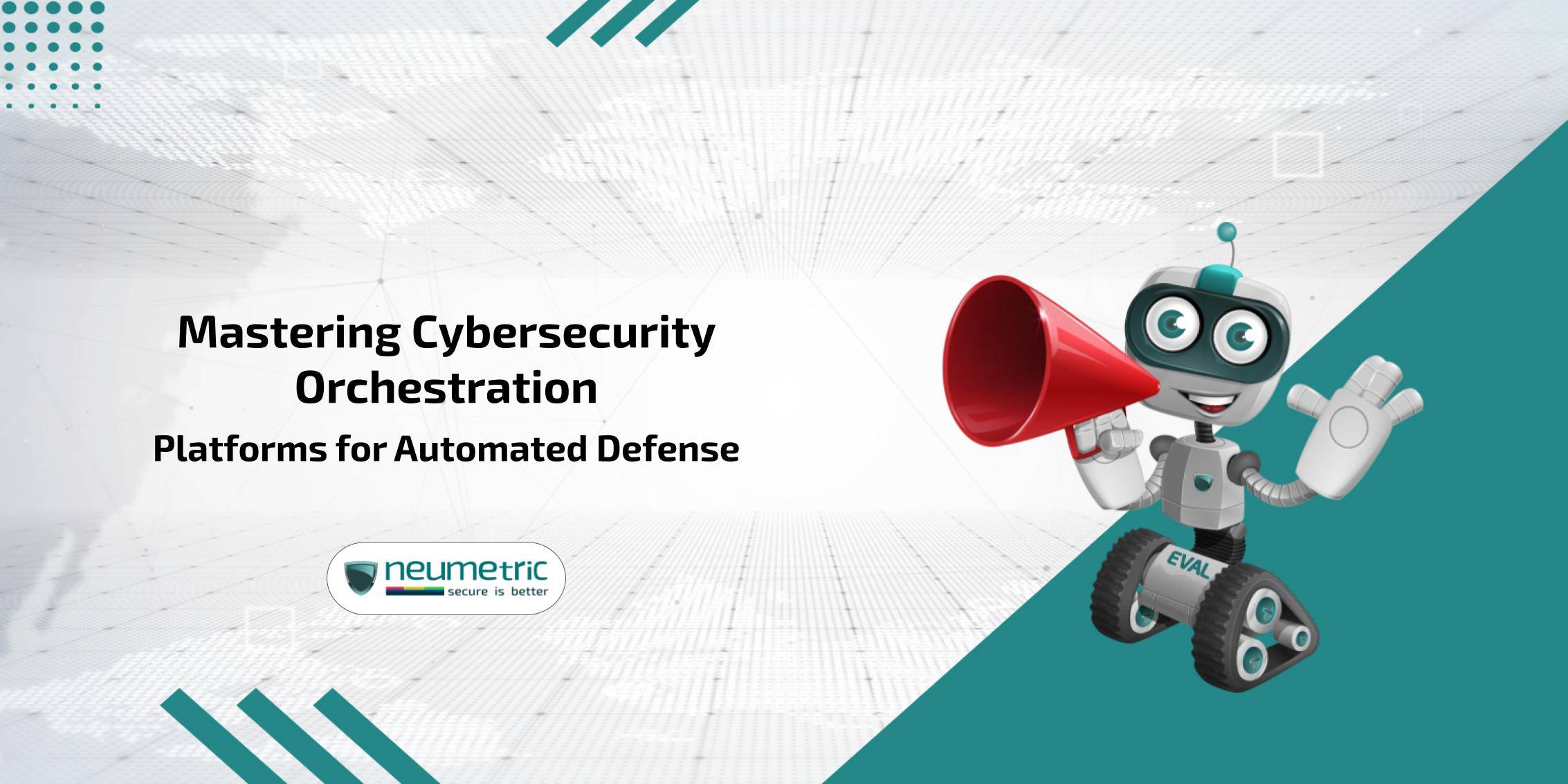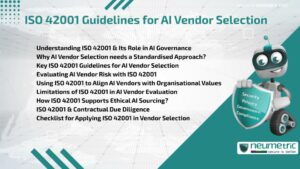Table of Contents
ToggleMastering Cybersecurity Orchestration: Platforms for Automated Defense
Introduction
In today’s fast-paced digital landscape, safeguarding your organization against cyber threats requires more than just a robust firewall. Cybersecurity orchestration is the conductor of the digital symphony, orchestrating the seamless collaboration of various security tools & processes within an organization.
It’s the strategic coordination that ensures all the instruments (security tools) play in harmony to create a resilient defense against cyber threats. This unified approach aims to streamline the complex dance of cybersecurity, enabling organizations to respond to threats with precision & speed. In the age of instantaneous cyber threats, relying solely on manual responses is akin to dancing in slow motion while the music speeds up.
Automated defense, a core element of cybersecurity orchestration, empowers organizations to keep pace with the dynamic threat landscape. It’s the swift & intelligent response mechanism that can identify, isolate & neutralize threats before human intervention becomes possible. The importance lies not just in its efficiency but in its ability to outmaneuver the rapid evolution of cyber threats.
The Need for Automated Defense
In a digital era dominated by sophisticated cyber threats, the need for automated defense has become more than a security upgrade, it’s a fundamental requirement for survival in the digital wilderness.
Evolving Cyber Threat Landscape
The digital realm is not static; it’s dynamic where cyber threats constantly evolve. Attackers leverage advanced tactics, adapting their strategies to exploit vulnerabilities. Automated defense acts as the vigilant sentry, capable of instantly recognizing patterns, anomalies & potential threats.
In a landscape where seconds matter, automated defense is the swift responder, staying one step ahead of the ever-changing threat landscape.
Advantages of Automated Defense Systems
The advantages of automated defense extend beyond speed. These systems operate 24/7 without fatigue, providing continuous monitoring & immediate response capabilities. They enhance accuracy by minimizing the margin of human error, ensuring a level of precision crucial for effective threat mitigation.
Automated defense is not merely a convenience but a strategic imperative, freeing up human resources to focus on strategic aspects while the automated systems handle the tactical front lines.
Cybersecurity Orchestration Platforms
Cybersecurity Orchestration Platforms are like the conductors of the digital defense orchestra. They coordinate & streamline various security tools & processes within an organization. Think of them as the choreographers ensuring that all security instruments play in harmony.
These platforms automate incident detection, response workflows & seamlessly integrate with diverse security tools, creating an efficient & unified defense against cyber threats. In essence, they are the strategic coordinators that enhance the speed & precision of an organization’s response to the dynamic & evolving threat landscape.
Core Functions
- Incident Detection & Response: Imagine an alarm system that not only detects an intruder but also initiates a swift & precise response. Cybersecurity orchestration platforms excel in automating the detection of security incidents & orchestrating a coordinated response to mitigate the threat.
- Workflow Automation: Repetitive & time-consuming tasks are the bane of manual cybersecurity processes. Orchestration platforms automate workflows, streamlining processes & ensuring that the right actions are taken at the right time without human intervention.
- Integration with Security Tools: The strength of orchestration lies in its ability to integrate seamlessly with various security tools. These platforms ensure that your diverse set of security instruments – from antivirus software to intrusion detection systems – harmonize their efforts for a unified defense strategy.
Key Components
- Playbooks & Automation Scripts: These predefined sets of actions & responses automate specific security processes, ensuring a consistent & effective defense strategy.
- Integration Connectors: Integration connectors bridge the gap between diverse security tools. These connectors enable smooth communication & collaboration, creating a cohesive defense ecosystem.
- Threat Intelligence Feeds: In the ever-evolving threat landscape, knowledge is power. Cybersecurity orchestration platforms leverage threat intelligence feeds, constantly updating their understanding of emerging threats to enhance proactive defense.
Implementation
Deploying automated defense within your organization requires strategic planning & careful execution. Let’s navigate through the crucial steps that ensure a seamless integration of cybersecurity orchestration.
Assessing Organizational Needs
- Identifying Security Gaps:
- Conduct a thorough audit to pinpoint existing vulnerabilities & potential security gaps.
- Determine the specific cybersecurity challenges your organization faces.
- Understanding Compliance Requirements:
- Align the implementation with industry regulations & compliance standards.
- Ensure the chosen platform caters to the specific compliance needs of your organization.
Selecting the Right Platform
- Considerations for Platform Evaluation:
- Evaluate the scalability of the platform to accommodate future growth.
- Assess the ease of integration with existing security infrastructure.
- Customization & Integration Options:
- Choose a platform that offers customization options to tailor the solution to your organization’s unique needs.
- Ensure seamless integration with your existing suite of security tools.
Implementation Best Practices
- Training & Skill Development:
- Provide comprehensive training for the security team on the selected platform.
- Foster a culture of continuous learning to keep up with updates & new features.
- Creating & Testing Playbooks:
- Develop playbooks that align with your organization’s specific cybersecurity processes.
- Regularly test & update playbooks to adapt to evolving threats & challenges.
By strategically assessing needs, selecting the right platform & implementing best practices, organizations can harness the full potential of cybersecurity orchestration. The success of implementation sets the stage for the real-world that showcases the transformative impact of automated defense in action.
Overcoming Challenges
As organizations venture into the realm of cybersecurity orchestration, they may encounter challenges that require adept navigation. Let’s address common implementation hurdles & explore effective strategies to overcome these obstacles, ensuring a smooth & successful integration of automated defense.
Common Implementation Challenges
- Integration Issues:
Challenge: Difficulty in seamlessly integrating the orchestration platform with existing security tools.
Solution: Prioritize platforms with strong integration capabilities & seek expert guidance during the integration process.
- Staff Resistance to Automation:
Challenge: Resistance or hesitancy among staff members towards embracing automated defense processes.
Solution: Conduct comprehensive training sessions to familiarize the team with the benefits of automation & address concerns through open communication.
Strategies for Overcoming Challenges
- Communication & Training:
Strategy: Foster a culture of transparency & open communication regarding the benefits of automated defense.
Implementation: Conduct regular training sessions to upskill the team & address concerns effectively.
- Continuous Monitoring & Improvement:
Strategy: Implement a system for continuous monitoring of the orchestration platform’s performance.
Implementation: Regularly assess the effectiveness of playbooks, identify areas of improvement & adapt to emerging threats.
By acknowledging & proactively addressing these challenges, organizations can enhance the resilience of their cybersecurity orchestration implementation. As we navigate through potential obstacles, the focus shifts towards real-world success stories, drawing inspiration from those who have effectively conquered these challenges & fortified their defenses.
Future of Cybersecurity Orchestration
Emerging Trends in Automated Defense
- Extended Automation Capabilities:
- Trend: Increased automation in complex decision-making processes, reducing the reliance on manual intervention.
- Impact: Faster response times & enhanced adaptability to evolving threat landscapes.
- Zero Trust Security Models:
- Trend: Wider adoption of Zero Trust frameworks, ensuring continuous verification & security across all organizational layers.
- Impact: Strengthened defenses by eliminating assumptions about trust within the network.
Integration with Artificial Intelligence & Machine Learning
- Advanced Threat Detection:
- Integration: Deeper incorporation of Artificial Intelligence [AI] & Machine Learning [ML] for real-time threat detection & analysis.
- Impact: Improved accuracy in identifying & mitigating sophisticated cyber threats.
- Predictive Analytics:
- Integration: Integration of predictive analytics to anticipate potential security breaches.
- Impact: Proactive defense strategies, reducing the likelihood of successful attacks.
Predictions for the Evolution of Cybersecurity Orchestration
- Holistic Security Orchestration:
- Prediction: A move towards comprehensive security orchestration covering not just digital assets but also physical & cloud environments.
- Impact: Unified defense strategies, ensuring holistic protection against multifaceted threats.
- User & Entity Behavior Analytics [UEBA] Integration:
- Prediction: Increased integration of UEBA for analyzing patterns of user & entity behavior.
- Impact: Enhanced anomaly detection, enabling early identification of potential security risks.
The future of cybersecurity orchestration holds the promise of a more sophisticated & adaptive defense landscape. By embracing these trends & predictions, organizations can stay ahead of the cybersecurity curve, ensuring a resilient defense against the ever-evolving threats in the digital realm.
Conclusion
As we journeyed through the definition & importance of cybersecurity orchestration, explored popular platforms, delved into implementation strategies & glimpsed into the future, one resounding theme echoed – the critical need for automated defense. Automated defense, facilitated by cybersecurity orchestration, is not a luxury but a strategic imperative in the face of an ever-evolving cyber threat landscape. The integration of orchestration platforms empowers organizations to detect, respond & mitigate threats with unparalleled speed & precision.
The strategies to overcome implementation challenges serve as guiding lights for organizations embarking on the path of automated defense. Continuous improvement, open communication & a commitment to training form the pillars of a resilient cybersecurity strategy. Looking forward, the future of cybersecurity orchestration holds promises of extended automation, integration with advanced technologies like AI & ML & a holistic approach covering diverse organizational layers. By embracing these trends & predictions, organizations can stay ahead in the ongoing battle for digital security.
As we conclude this exploration, the call to action is clear – embrace cybersecurity orchestration, fortify your defenses & ensure that your organization’s digital symphony plays in perfect harmony, safeguarding against the ever-present cyber threats of the modern age.
FAQ
What is cybersecurity orchestration & why is it crucial?
Cybersecurity orchestration is like the conductor of your digital defense symphony, ensuring security tools work together. It’s crucial in today’s threat landscape for swift & precise threat response.
How do cybersecurity orchestration platforms work?
Platforms act as maestros, detecting incidents, automating workflows & integrating seamlessly with various security tools – like a well-choreographed dance for your security processes.
What challenges may arise during implementation & how can they be overcome?
Integration issues & staff resistance are common hurdles. Effective communication, comprehensive training & continuous monitoring are key – like teaching a new dance routine.
What’s the future of cybersecurity orchestration?
Expect extended automation, integration with AI & a move towards holistic security covering digital, physical & cloud realms – staying ahead of evolving threats.
How can organizations choose the right cybersecurity orchestration platform?
Assess organizational needs, consider scalability, integration & customization – like finding the perfect dance partner who understands & adapts to your security rhythm.





